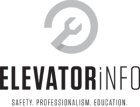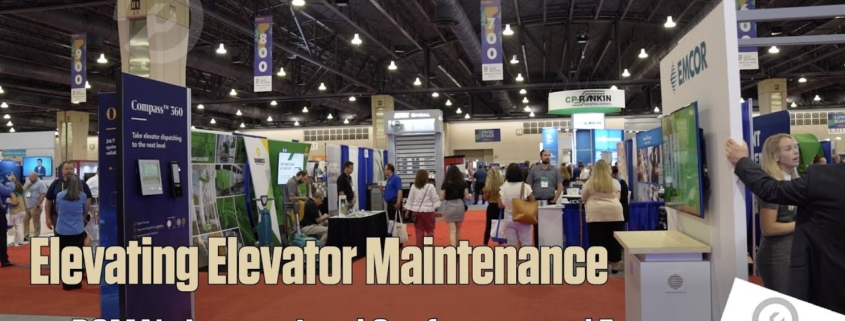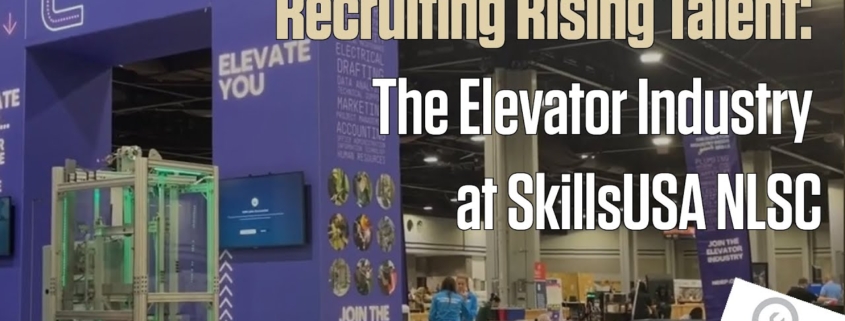“We want to help them get the best service they can get – and have safe elevators for the riding public – so we’re trying to spread the word about the (International Union of Elevator Constructors) IUEC, about ElevatorInfo, and about safe conveyances across the country,” said James Demmel, Assistant National Director for the Elevator Industry Work Preservation Fund (EIWPF), speaking at in Philadelphia, Pennsylvania.
He continued, “Here at (the) BOMA (International Conference and Expo), you have everything from skyscraper building owners to three to four story condominium owners… whether you have a billion dollar building or a couple hundred thousand dollar multifamily building with an elevator, you can get premium service, you can have the safest conveyance in the world, and we can make sure that you’re happy with your contractor and happy with your experience riding elevators”
Established in 1907, BOMA is an organization that was set up to support commercial building owners, managers, and other professionals in the field by providing opportunities for connection, education, and advocacy. Their annual International Conference and Expo is held at a different major city in the United States each year. This year, the Building Owners and Managers Association (BOMA) International Conference & Expo will take place from June 28 to July 1, 2025, at the Boston Convention & Exposition Center (located at 415 Summer St, Boston, MA 02210).
BOMA’s International Conference and Expo is a venue for building owners and building management representatives to come together to talk about current trends in the industry, see the latest technologies in real estate markets, and learn ways to better maintain their investments. The theme for this year’s BOMA International Conference and Expo is “Reset, Refresh, Reinvent”.
As BOMA partners, representatives from ElevatorInfo and EIWPF will be in attendance at this year’s conference in Boston. You’ll be able to find them at booth #937 as well as on the floor of the conference, connecting with building owners and managers to share information and answer questions about maintenance and service for elevators, escalators, moving walks, and other conveyance equipment in commercial, industrial, and residential buildings. The 2025 conference will be the eighth time ElevatorInfo / EIWPF has participated in BOMA’s International Conference and Expo, and the first time that the group will be hosting a live presentation.
During the information / Q&A session on Monday, June 30th, from 2:00 – 3:00 PM, building owners, managers, and other real estate professionals will have the opportunity to learn about the benefits of elevator Maintenance Control Programs (MCPs) for their elevators, escalators, moving walks, and other vertical transportation equipment.
ElevatorInfo recently published a blog post on The Importance of Elevator Maintenance Control Programs (MCPs) for Building Owners and Managers. The article begins with the basics – what an MCP is, how an MCP is developed, and why these proactive maintenance plans are important for all building owners and managers to set up with their elevator service companies.
“A Maintenance Control Program (MCP) is exactly what it sounds like: a plan to ensure that an elevator, escalator, or other conveyance equipment is maintained correctly throughout its life. It contains specific written information that indicates what maintenance should be performed, how that maintenance should be performed, when it should be performed, and how often it should be performed.” – The Importance of Elevator Maintenance Control Programs (MCPs) for Building Owners and Managers, January, 2024.
“Every elevator comes from the manufacturer has recommended maintenance – and the maintenance control program is a contract you’ll sign with your elevator provider to do all of the necessary maintenance, all of the inspections, and all the upkeep to make sure that the unit that you bought is still running in 10, 15, 20 years,” said James Demmel.
“When we buy a car, we change the oil every three or five thousand miles. When you buy an elevator, what do you do? Maintenance Control Programs (MCPs) are something we can help a building owner or manager understand. The MCP tells them what they need to have done on a weekly, monthly, or yearly basis to their elevators or escalators, and to make sure they are getting that coverage through their contractor. This the elevator manufactures telling you how to get the most out of their equipment.”
Topics covered during the 2025 ElevatorInfo / EIWPF Elevating Elevator Maintenance presentation will include:
- What maintenance should be performed on your elevators, escalators, and other conveyance equipment
- How often your conveyances should be serviced
- Why it is important to have a building access plan
- How a Maintenance Control Program can improve satisfaction with your elevator and escalator service
- How you can set up a Maintenance Control Program for the conveyance equipment in your building
Maintenance control programs can be tailored to be flexible to meet the needs of your particular building, your equipment, and your schedule.
“If you’re in an apartment building or a condo,” explained James Demmel, “you’re going to be busier on the weekends. Nine to five during the week, you’re not going to have a lot of traffic – (it’s a) great time to do your maintenance. In an office building, Saturday and Sunday is a great time to do your maintenance. You can build these into your maintenance control program and that will help you get the maximum effect and maximum use time out of your elevator,” he said.
“We are here to partner with you. You will get premium service by the best IUEC-trained and qualified elevator mechanics, apprentices, and service providers to make sure your elevators, escalators, moving walks, or wheelchairs lifts are the safest they can be – with the highest standards and latest technologies – so that they experience minimal downtime, adding value to their investment.”
During and after the presentation, staff from the Elevator Industry Work Preservation Fund (EIWPF) and ElevatorInfo will be at booth #937 on the floor chatting with building owners and managers about how to connect with a service-forward, reliable elevator company experienced in setting up and implementing maintenance control programs for conveyance equipment in industrial, commercial, and residential buildings.
Along with representatives from EIWPF and ElevatorInfo, some of the industry’s major original equipment manufacturers (OEMs) and largest elevator companies, such as Otis, Schindler, TK Elevator, KONE, Fujitec, and Mitsubishi – plus a number of IUEC-affiliated independent elevator companies, will be in attendance at the conference. They will have information booths set up on the conference floor, and will be participating in panel discussions on topics of interest for people who work in real estate and in the commercial, residential, and industrial building sector.
By working with IUEC-affiliated elevator companies, building owners and managers have access to the best-trained maintenance and service professionals in the industry. During their apprenticeship, they are enrolled in the industry’s highly respected National Elevator Industry Educational Program (NEIEP), a four-plus year USDOL Registered Apprenticeship program where they complete eight semesters of college-level learning and work 8,000 supervised hours under the direction of an experienced mechanic. Once they’ve completed their coursework and earned their hours, they sit for a capstone validated Mechanic Exam they must pass to earn journeyman mechanic status.
Their education and training doesn’t end with apprenticeship – NEIEP also offers dozens of classroom-based and online continuing education courses for mechanics, where they can become certified in forklift operation, American Heart Association Heartsaver CPR/First Aid/AED, OSHA 10 and 30 Construction and General Industry, SAIA Scaffolding, an ANSI-accredited Signaling and Rigging program, and more.
And a number of colleges and universities recognize the work completed as a student in the NEIEP apprenticeship program as equivalent to up to 45 college transfer credits. The Community College of Baltimore County, Ivy Tech Community College, Roger Williams University, Rowan University, Wentworth Institute of Technology, Thomas Edison State University, and the University of Nebraska at Omaha are just some of the schools that have partnered with NEIEP.
Many IUEC elevator mechanics continue their education further by becoming elevator inspectors through the Qualified Elevator Inspector Training Fund’s ANSI-accredited Certified Elevator Inspector program. By meeting a series of prerequisites based on their experience in the elevator industry, completing an intensive training program that teaches them how to navigate and interpret ASME, NEC, and other building and safety codes, and passing the industry’s most rigorous certification exam, these elevator code experts earn a certification that qualifies them to inspect elevator and escalator equipment throughout the United States and Canada. While some open their own businesses or become state or provincial inspectors, others continue on in their work as elevator mechanics who bring an additional layer of expertise to the work they do for their companies and their customers.
If you’re in Boston at the end of June, be sure to stop by booth #937 – and, if you’re at the conference on Monday, June 30th, attend our Elevating Elevator Maintenance information / Q&A session from 2:00 – 3:00 PM to see how working with an IUEC-affiliated elevator maintenance and service company to implement a Maintenance Control Program for your elevator, escalator, and other vertical transportation equipment can improve your elevator service and reduce unplanned downtime for your building.


